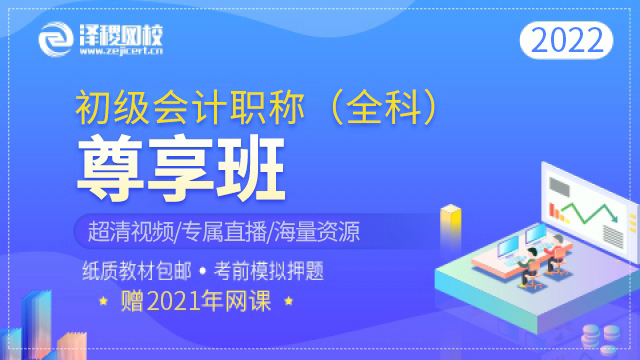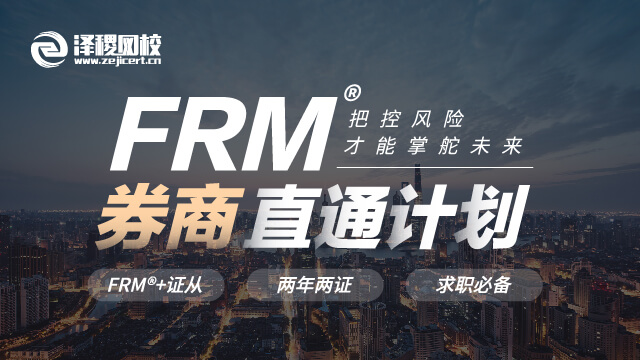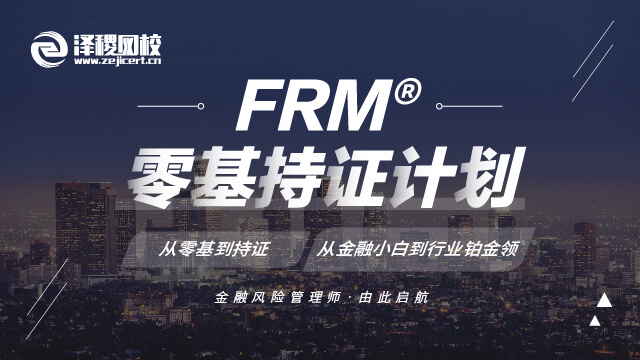
一直以来同学们都觉得FRM二级考试难度会比较大,所以帮助同学们更好的去备考FRM二级考试泽稷小编这次就为大家整理了2020年FRM二级考纲的信息,同学们如果需要进行备考的话可千万不要错过了哦!
一、Market Risk Measurement and Management
1.考试比重
占比20%。受二级新增学科Liquidity and Treasury Risk的影响,市场风险在2020年FRM®二级考试中的占比由原来的25%下降至20%。
2.教材变化和考点解读
删除
Statistical Correlation Models—Can We Apply Them to Finance?
•Evaluate the limitations of financial modeling with respect to the model itself,calibration of the model,and the model’s output.
•Assess the Pearson correlation approach,Spearman’s rank correlation,and Kendall’sτ,and evaluate their limitations and usefulness in finance.
这个章节首先介绍的是金融模型的缺点,从而引出correlation在实务中并不是常数,会随着市场的波动而变化。接着介绍了衡量correlation的三种方法,Pearson correlation,Spearman’s rank correlation,and Kendall’sτ,对比了三种方法的优缺点。
更新
协会对参考书目进行了版本更新,原Gunter Meissner写的Correlation Risk Modeling and Management是2014年版的,现在更新为2019年版。参考书目的变化没有影响到相关章节的考点。
学科之间的内容调整
有两个章节移到了Market risk,考点均没有发生变化:
✅Parametric Approaches(III):Extreme Value
这个章节是比较重要的考点。早年就属于Market risk,后来协会将内容调整到了Operational Risk,今年又移回来了,所以没有实质性变化。
✅Fundamental Review of the Trading Book
这个章节原本归在Basel Accord,属于了解性的内容。
3.学科点评
总体来看,Market Risk的考纲变化不大。除了受新增学科的影响,考试占比略有下降,内容上依然是干货满满,没有“缩水”。
删除了一个关于Correlation Models的考点,这个考点偏定性,不难,容易考方法之间的对比。删除后节省了大家的学习时间,是一处利好。参考书目的版本更新是协会的常规操作,影响不大,涉及的考点没有变化。学科之间的内容调整对于学员备考二级没有影响。
二、Credit Risk Measurement and Management
1.考试比重
占比20%。因为今年新加入了一门学科,信用风险这部分考试权重由去年的25%下降至今年的20%。
2.教材变化和考点解读
删除
1.Developing,Validating and Using Internal Ratings
这部分内容对应章节:Chapter 2.Classifications and Key Concepts of Credit Risk中。
2.The xVA Challenge:Counterparty Credit Risk,Funding,Collateral,and Capital
这部分内容对应章节:Chapter 12.Default Probabilities,Credit Spreads,Funding Costs
学科之间的内容调整
将1级Valuation and risk models中Chapter 5.Capital Structure in Banks的部分内容移入2级Credit risk中。
对应的参考书为:Risk Management and Value Creation in Financial Institutions
3.学科点评
整体来看,Credit risk的考纲变化不大,几个小的调整也不是传统的考试重点。删除的内容也不是之前难点、重点,因此虽然删除了2个部分,但从考试来讲,实际的影响不大。今年从FRM®一级有新调入的内容,但涉及篇幅不多,内容也较为简单,因为对这门课的影响也不大。整体来看,Credit risk这门学科的难点、重点依然没变。
三、Operational Risk and Resiliency
1.考试比重
占比20%。受二级新增学科Liquidity and Treasury Risk的影响,操作风险在2020年考试中的占比由原来的25%下降至20%。
2.教材变化和考点解读
新增
Chapter 2:Risk Culture
•Compare risk culture and corporate culture and explain how they interact.
•Explain factors that influence a firm’s corporate culture and its risk culture.
•Describe methods by which corporate culture and risk culture can be measured.
•Describe characteristics of a strong risk culture and challenges to the implementation of an effective risk culture.
•Assess the relationship between risk culture and business performance.
这个章节以定性为主,讨论风险文化,这个主题在全球金融机构中变得越来越重要。
Chapter 8:The Cyber-Resilient Organization
•Describe elements of an effective cyber-resilience framework and explain ways that an organization can become more cyber-resilient.
•Explain resilient security approaches that can be used to increase a firm’s cyber resilience and describe challenges to their implementation.
•Explain methods that can be used to assess the financial impact of a potential cyber attack and explain ways to increase a firm’s financial resilience.
•Define cyber-resilience and compare recent regulatory initiatives in the area of cyber-resilience.
•Describe current practices by banks and supervisors in the governance of a cyber risk management framework,including roles and responsibilities.
•Explain methods for supervising cyber-resilience,testing and incident response approaches and cyber security and resilience metrics.
•Explain and assess current practices for the sharing of cyber security information between different types of institutions.
•Describe practices for the governance of risks of interconnected third-party service providers.
这一章节主要讨论的是网络风险和网络弹性,阐述了一些关于使机构对网络风险更有弹性的原则和业界最佳实践。
“Building the UK financial sector’s operational resilience”
•Describe operational resilience and describe threats and challenges to the operational resilience of a financial institution.
•Explain recommended principles,including tools and metrics,for maintaining strong operational resilience at financial institutions.
•Describe potential consequences of business disruptions,including potential systemic risk impacts.
•Define impact tolerance;explain best practices and potential benefits for establishing the impact tolerance for a firm or a business process.
“Striving for Operational Resilience:The Questions Boards and Senior Management Should Ask,”Oliver Wyman,2019.
•Compare operational resilience to traditional business continuity and disaster recovery approaches.
•Describe elements of an effective operational resilience framework and its potential benefits.
这一章继续阐述操作弹性,探讨了在操作弹性领域的最佳实践和指导方针。
学科之间的内容调整
有五个原本属于Operational Risk的章节移到了Market risk和Liquidity Risk:
✅Chapter 7.Parametric Approaches(III):Extreme Value
✅Chapter 12.Repurchase Agreements and Financing
✅Chapter 12.Liquidity and Leverage
✅Darrell Dufe,“The Failure Mechanics of Dealer Banks.”
✅Chapter 18.Fundamental Review of the Trading Book
•有原本属于一级Foundations of Risk Management的章节移动到了Operational Risk:
✅Chapter 4.What is ERM?
3.学科点评
总体来看,2020年操作风险的考纲有一定变化,整个学科无论从结构上和内容上都有了较大的调整。虽然由于新增学科导致考试占比略有下降,但是考纲内容进行了扩充,增加了关于风险文化、网络风险、网络弹性、操作弹性等相关章节。
还将原本属于一级风险管理基础的ERM移到了二级操作风险中。操作风险的学科名从Operational and Integrated Risk Management变成了Operational Risk and Resiliency,新增的操作弹性可以看成是这门学科的新重点。
协会为了使整体考试框架更为清晰,又将原有的五个章节移到了市场风险和新增的流动性风险中。不过,学科之间的内容调整对于学员备考没有太大的影响。疫情期间泽稷小编助你备考FRM:免费领取【FRM电子版备考学习资料】

四、Liquidity and Treasury Risk Measurement and Management
1.考试比重
占比15%。作为二级新增的一门学科,Liquidity and Treasury Risk落在了考试占比的第二梯队,仅次于二级的“三座大山”--市场风险、信用风险和操作风险。
2.教材变化和考点解读
作为一门全新的学科,我们可以通过协会公布的Study guide浏览这门学科的大致内容。总共分为9个section,对应协会原版书第44-60章,分别为:
•Liquidity risk principles and metrics
•Liquidity portfolio management
•Cash-flow modeling,liquidity stress testing and reporting
•Contingency funding plan
•Funding models
•Funds transfer pricing
•Cross-currency funding
•Balance sheet management
•Asset liquidity
第44-46章讨论流动性风险的潜在来源、定量流动性指标和机构流动性风险管理方法。
第48-49、51-53章进一步讨论了这一问题,并介绍了流动性风险管理框架的主要组成部分,包括制定和监控内部流动性指标、现金流建模、流动性压力测试、应急融资计划、管理日内流动性和流动性风险报告等。第50章从交易商银行的角度阐述流动性,解释了银行可能倒闭的潜在警告信号、潜在的系统性流动性风险以及应对这些情景的政策。
第47、54和59章提供了银行用于管理流动性和财政风险的日常技术的更多细节,包括资产负债管理、流动性组合管理、确定解决流动性错配的资金来源以及管理存款账户和负债。接着第55章介绍了回购协议。
第56章介绍了转移定价,转移定价是用于流动性和资金风险管理的工具。第57和58章,提出跨币种融资,并且介绍了抛补利率平价理论。
第60章,从资产管理者的角度阐述流动性风险,提供关于如何衡量和管理非流动性资产风险的见解。
值得注意的是,这门学科并非所有内容都是新增。
有3个章节是从Operational Risk移到了这门学科,包括:
Repurchase Agreements and Financing
Liquidity and Leverage
The Failure Mechanics of Dealer Banks
有1个章节是从Investment Risk移到了这门学科:Illiquid Assets。
学科之间的内容调整对于学员备考二级没有影响,但是会使得学科内部的框架更为完善。
3.学科点评
这门学科的核心知识点为:计量与管理流动性风险。但实际上这门学科涉及的知识点广度很大,例如涉及到很多产品,衍生品、外汇、回购等,也涉及一些其他科学的内容,如资产负债管理、巴萨尔协议、信用风险中的Counterparty risk等等。
整体来看,这门学科涉及的知识点广而杂,但都围绕着核心Liquidity risk。从考察方式上看,多为定性概念类的知识,需要计算的知识点不多、且需要计算的知识点难度也不大。
作为新增学科,Liquidity and Treasury Risk的考试比重与Investment risk旗鼓相当,说明GARP协会对这门学科,或者说对实务中的流动性和资金风险高度重视。
虽然学习内容变多了,考试复习时间更久了,但是这样的变化我们也可以乐观地对待。作为金融从业人员,与时俱进、不断学习才能提高我们自身的竞争力;另一方面,GARP协会紧跟时事热点、提高FRM®持证人的门槛,那么FRM®这张证在未来就有更大的潜在价值。
五、Risk Management and Investment Management
1.考试比重
占比15%。较往年比并没有改变。
2.教材变化和考点解读
修改
Chapter 17.Risk Monitoring and Performance Measurement当中,原来的知识点“Explain the importance of liquidity considerations for a portfolio”改为“Describe Liquidity Duration Statistic and how it can be used to measure liquidity”。
仅从表述上判断,修改后的内容更偏重于量化计算。
学科之间的内容调整
Chapter 13.Illiquid Assets
•Evaluate the characteristics of illiquid markets.
•Examine the relationship between market imperfections and illiquidity.
•Assess the impact of biases on reported returns for illiquid assets.
•Describe the unsmoothing of returns and its properties.
•Compare illiquidity risk premiums across and within asset categories.
•Evaluate portfolio choice decisions on the inclusion of illiquid assets.
该章下总共六个知识点全部从该学科中删除,不过移到了新增学科Liquidity and Treasury Risk之中。考点本身没有变化。
3.学科点评
总体来看,该门的考纲变化很小。删除的知识点被移动到了新增的科目,本质上是换汤不换药。实质性的改变只是修改了一个知识点,对于考试影响也不大,学员们按部就班学习即可。
六、Basel Accords
1.考试比重
巴塞协议其实是包含在操作风险当中的,但由于其内容相对独立且重要性较强,我们在梳理课程时自主将它拆分了出来,根据过往考试经验它在整个二级考试中占比约10%。
但今年受二级新增学科Liquidity and Treasury Risk的影响,操作风险整体在2020年考试中的占比由原来的25%下降至20%,因此我们理解巴塞尔协议的比重也应相应下降。
2.教材变化和考点解读
删除
1、删除了反洗钱和恐怖融资的后三个LOS。
2、删除多德-弗兰克法案对美国金融市场监管的重大改变。
更新
1、之前巴塞尔协议的主体内容参考的是JOHN HULL和巴塞尔协议原文,现换成GARP风险研究所的论文。
2、新增LOS:解释监管“镀金”的动机,并提供2007-2009年金融危机后引入的立法和监管改革的例子。
学科之间的内容调整
原本属于Basel Accords的Chapter 18.Fundamental Review of the Trading Book章节移到了Market risk,考点没有发生变化。
3.学科点评
总的来说,Basel Accords的考纲变化不大,改动主要以删除为主,另外受新增学科的影响,考试占比略有下降。
具体来说,反洗钱和恐怖融资考点还保留但原来的四个LOS删掉了三个、多德-弗兰克法案删除、Fundamental Review of the Trading Book调整学科位置,此三项调整绝对是利好,节省了大家的学习时间。
新增解释监管“镀金”的动机是替换了之前的多德弗兰克法案,虽然是个很小的考点,但是对于新增内容大家要予以重视。此外,虽然巴塞尔协议主体内容参考书更换了,但实则是“”换汤不换药。
七、Current Issues
1.考试比重
占比10%。
2.教材变化和考点解读
删除
Cyber Risk,Market Failures,and Financial Stability
On the Fintech Revolution:Interpreting the Forces of Innovation,Disruption and Transformation in Financial Services
Central clearing and risk transformation
What is SOFR
The Impact of Blockchain Technology on Finance:A Catalyst for Change
这篇文章讲解了Risk manager在分析、应用区块链技术时需要考虑问题。本章还详细讲解了区块链技术在金融领域应用时,相关监管政策的改变。
FinTech and market structure in financial services:Market developments and potential financial stability implications
这篇文章讲解了金融科技对金融服务行业当前以及未来产生的影响。
Fintech credit markets around the world:size,drivers and policy issues
这篇文章讲解了推动Fintech credit市场发展的动力。Fintech credit markets对金融市场稳定的应用,以及对Fintech credit相应地监管措施。
Sound Practices:Implications of fintech developments for banks and bank supervisors
本章主要展示了Basel委员会提供的金融科技应用案例。
The Rise of Digital Money
本章讨论了电子货币应用的优势以及风险。探讨了电子货币如何影响银行领域。
Climate Change and Financial Risk
本章讨论了一种新型的金融风险:气候变化。
Beyond LIBOR:a primer on the new benchmark rates
本章讲解了将参考利率从LIBOR体系转为其他参考体系所面临的挑战,以及对银行资产负债管理带来的影响。
3.学科点评
今年Current issues从去年的7篇文章增加到了今年的10篇文章。去年的7篇文章里,只保留2篇与人工智能相关的文章,以及1篇大数据的文章。
而今年一共新加入了7篇文章,包括3篇Fintech相关的文章,1篇电子货币、1篇区块链、1篇参考利率,以及1篇气候变化与金融风险的文章。整体来看,重心依然是金融科技与人工智能。新加入的参考利率、气候变化与金融风险,区块链都是时下前沿的问题。
FRM二级考纲泽稷小编就先为大家介绍到这里了,同学们在进行FRM考试备考的过程中如果遇到什么难题的话可以向我们泽稷网校的老师寻求帮助哦,他们都会为你进行解答的。
相关资讯:FRM考试:市场风险有哪些?
扫码咨询泽稷老师,解读CFA®考试政策变动,海量CFA®学习资料免费领取,提供在线解答CFA®学习疑惑。


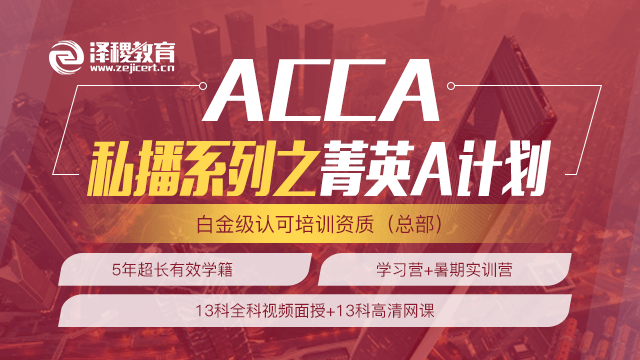

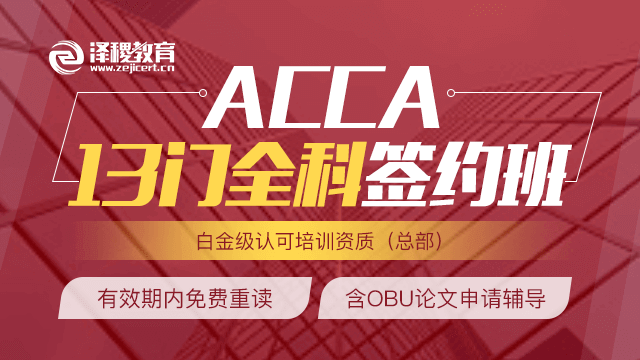
 白金级认可培训资质(总部)
白金级认可培训资质(总部)
 课程试听
课程试听
 职业规划
职业规划
 ACCA中文教材
ACCA中文教材
 考位预约
考位预约
 免费资料
免费资料
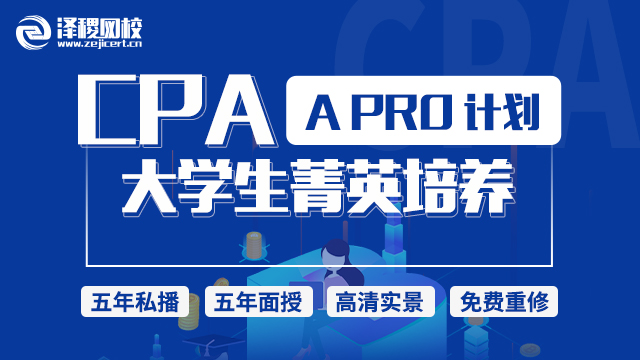
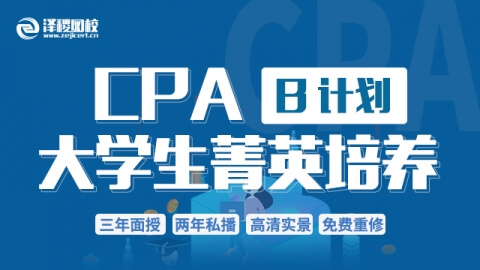
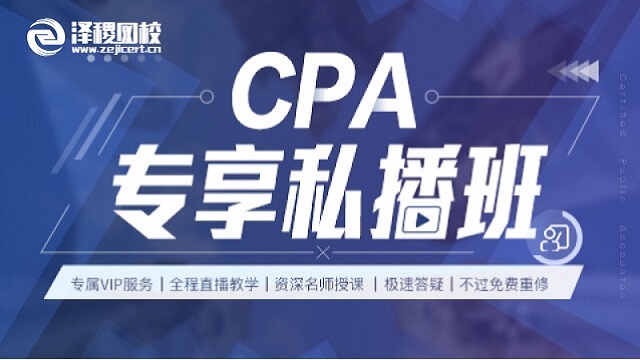

 题库下载
题库下载
 模拟机考
模拟机考


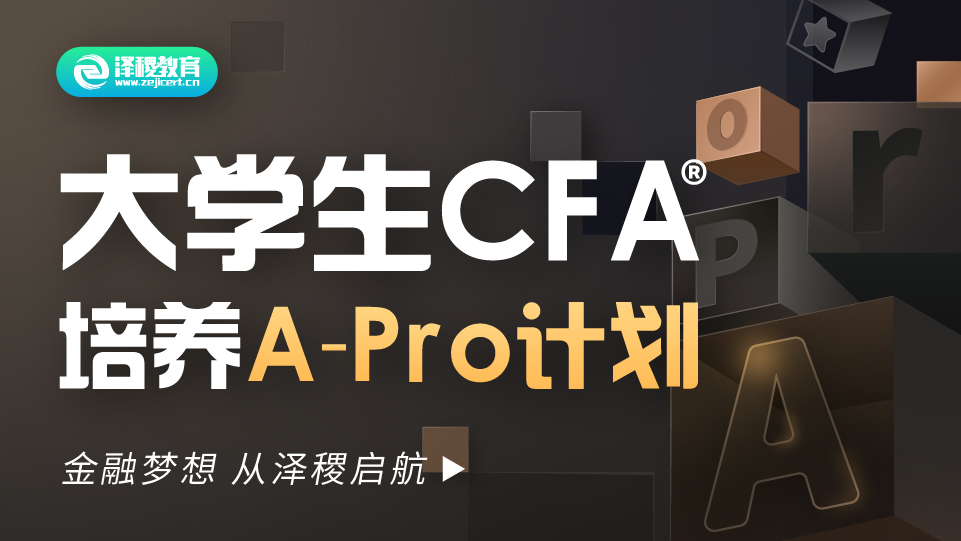
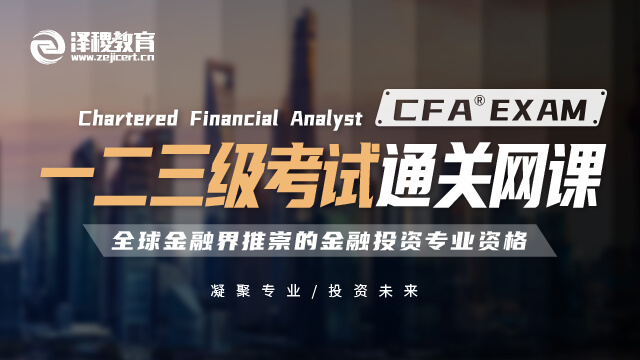
 CFA®成绩查询
CFA®成绩查询



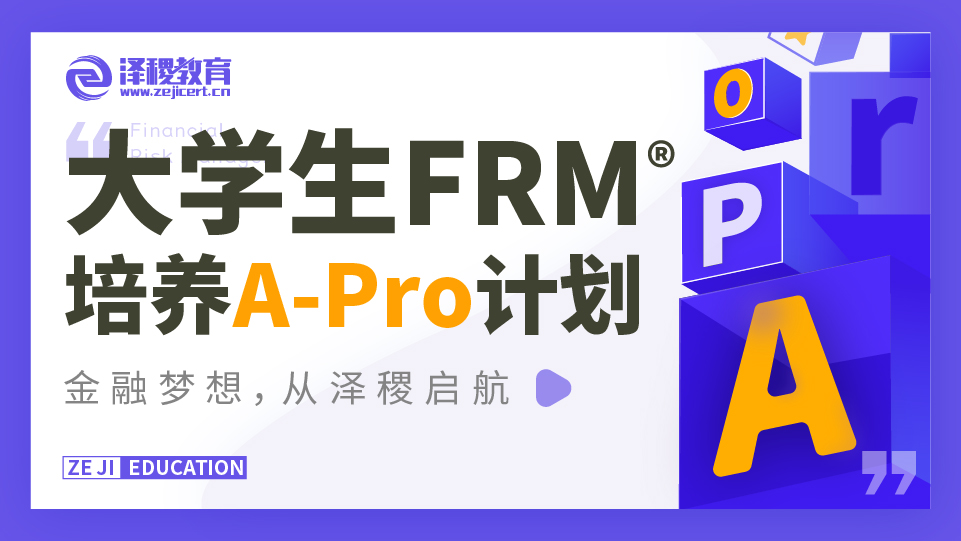
 GARP协会官方认可FRM®备考机构
GARP协会官方认可FRM®备考机构

